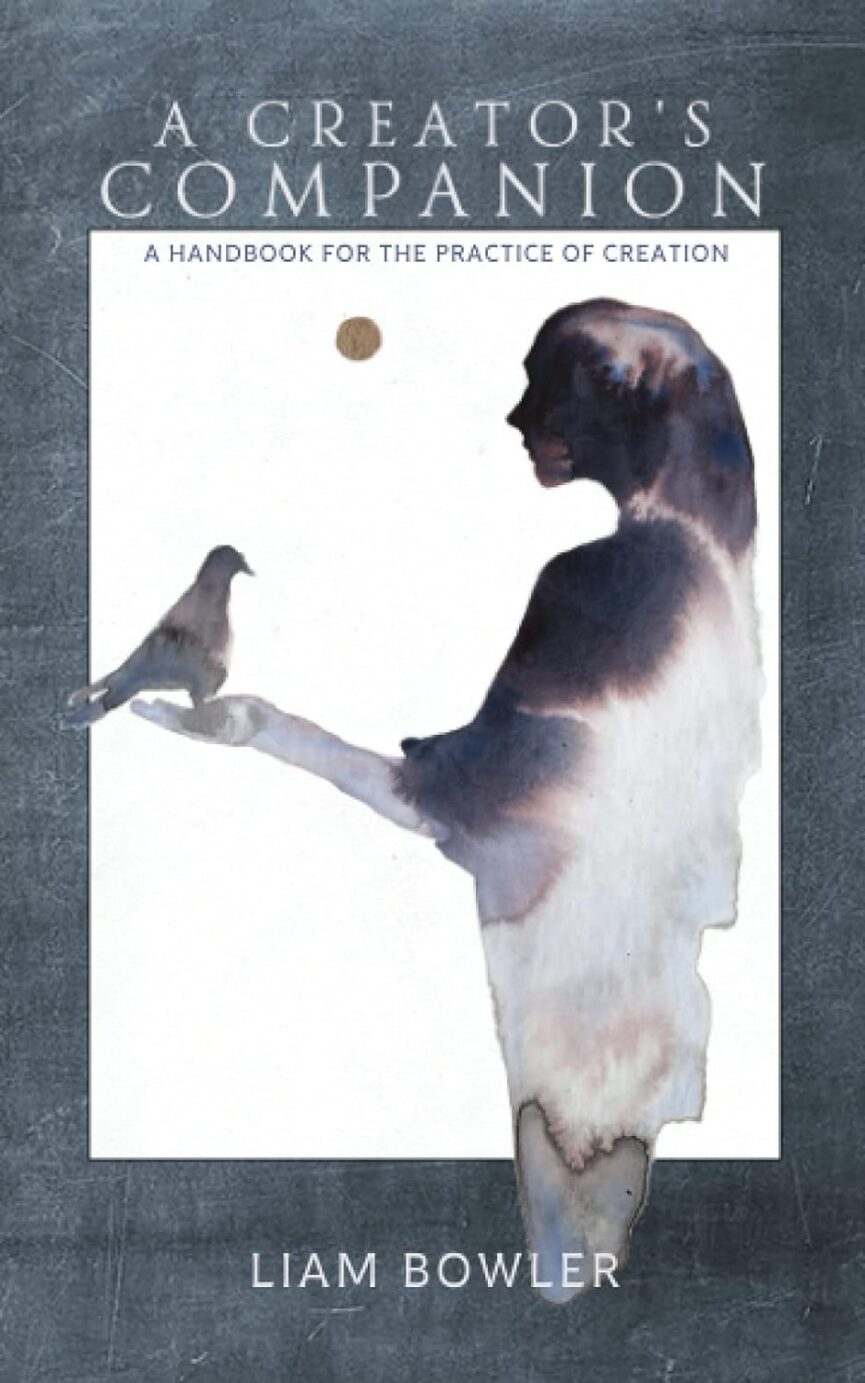I hope you consider yourself a creative person. Because you are! We are all generative beings, only satisfied and truly happy when we create something—whether an engaging lesson plan, a hearty meal from seemingly skimpy left-overs (the popularity of Chopped attests to how thrilling this can be) or an enjoyable day despite pouring rain. Humans possess an innate propensity to create. In fact, stifling the desire to create leads to depression and existential angst.
In my book, Parenting Well in a Media Age, I decipher the research that explains why we cannot feel belonging to a family, to a community, or even to the human race without fulfilling our need to create. I believe that the current teen mental health crisis means that often these remarkable young people do not know their gifts and the vital importance of sharing them. Their self-identities as creators have gone astray. Consequently, so have they.
The beautiful book, A Creator’s Companion, by Liam Bowler can inspire teens and adults alike, to dive courageously into the act of creating. Bowler stresses enjoying the creative process itself, without worrying about the outcome—which I think can take even more courage than sharing our creative outcomes with others. Ignoring our inner critic while focusing on creating for the joy of it, takes bravery. Our success, Bowler states in many ways, lies in the actual act of creating, not the creation itself and not whether the creation is accepted, understood, appreciated or rejected by others.
As I read the book, I was reminded of the words attributed to St. Thomas Aquinas on his deathbed, “All my work is straw.” A body of work on history, philosophy and theology that filled a library. All straw to him. A potent reminder that mortality puts our creative outcomes in perspective. Why not enjoy creating itself and let everything else go?
Being alone in the creative act can be scary. Working to express something not yet known, we sift through a lot of uncertainty. And that can uncomfortable. Surety feels safe, after all. Creating means we intentionally dive solo into limbo, waiting for answers to be revealed in their own time.
Bowler thinks creating is beautiful precisely because it necessitates an internal process:
“Creating is a beautiful subject, I think, because it’s such an internal process—it’s you making something—and it’s also so clearly in the world: it’s you making something. It’s not about what you think or believe; it’s about what you do and how you do it.”
Since the book is structured into one-page poetic snippet reflections, the reader easily goes inside of self to ponder Bowler’s perceptions and their relevance. He advises the reader: “The flow of pages has a linearity—there’s a beginning, middle, and end to roughly follow the beginning, middle, and end of making something—although you can open to any page and get a little reflection—like a tarot card.”
I read the book straight through when I first picked it up. And have consulted it like a tarot card several times since then. I am excited to follow its linearly aligned with the beginning, middle and ending of a project, truly making it a companion on my creating journey.
A major strength of the book is its unique organization for accompanying the creator every step of the way. Divided into five major sections, Opening, Orientation, On Creation, Disorientation, and Towards Completion, each one takes us through various viewpoints of the creative process as it unfolds. You may be familiar with the four stages: Incubation; Idea Stage, Drafting, and Finishing/Polishing. Bowler gives an innovative take on these stages, enabling the reader to disassemble the creative process in fresh ways. For instance, during the beginning stages of Orientation, Bowler provides unique ways to reflect on how we can listen to our body as we prepare to begin. As a former massage therapist, he brings a wholistic perspective, encouraging the reader to understand felt bodily experiences as creating progresses.
I especially appreciated the book’s Disorientation section—a creative phase I experience while drafting, but never had words for. Bowler brough this usually chaotic, confusing time to coherency for me. While I am often tempted to throw the whole thing out at this almost-final-point in the process, Bowler encourages a heightened awareness, a slowing down:
“When you’re disoriented, you don’t know what’s real, so you have to look—a most natural response, in an attempt to get oriented—but you can’t rely on an old idea of what this is like, whatever this is. You have to look, as if for the first time, to find out.”
In every section, Bowler embeds interesting questions and helpful suggestions—for relaxing, attending, applying. These could also be considered mindful practices that open up more channels for creative flow. All given in a soft non-judgmental, you-don’t-have-to-do-it-if-it’s-not-right-for-you way. Emphasizing the perfect naturalness of imperfection make the book a companion I could trust.
In dark times especially, creating has saved me. As the tears stop and some composure returns, I usually ask myself: “What is one generative thing I could do right now?’ Almost always, I find that creating something—whether a cleaned off countertop or a book review—brings me back to myself.
As you go about creating in your days ahead, I highly recommend turning to A Creator’s Companion. Gift it to yourself and to someone you love who loves to create. It’s an empathetic guide and inspirational friend who will re-acquaint you with your creative self and the unique gifts you bring to our world. And if you are ever in doubt about your vast creative potential, maybe these words from Thomas Aquinas will help (His “straw” has proved staying power!):
“…the greatness of the human person consists in this: that we are capable of the universe.” (Fox, p. 156)
Reference: Matthew Fox, Sheer Joy: Conversations with Thomas Aquinas on Creation Spirituality, p. 156.
Copyright, Gloria DeGaetano, 2024. All rights reserved.
